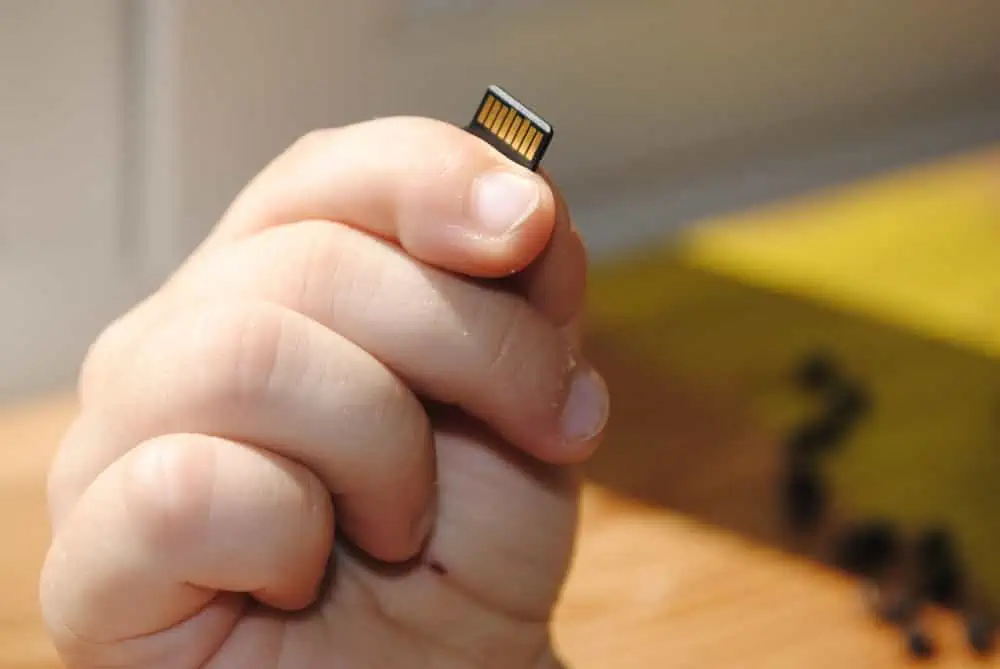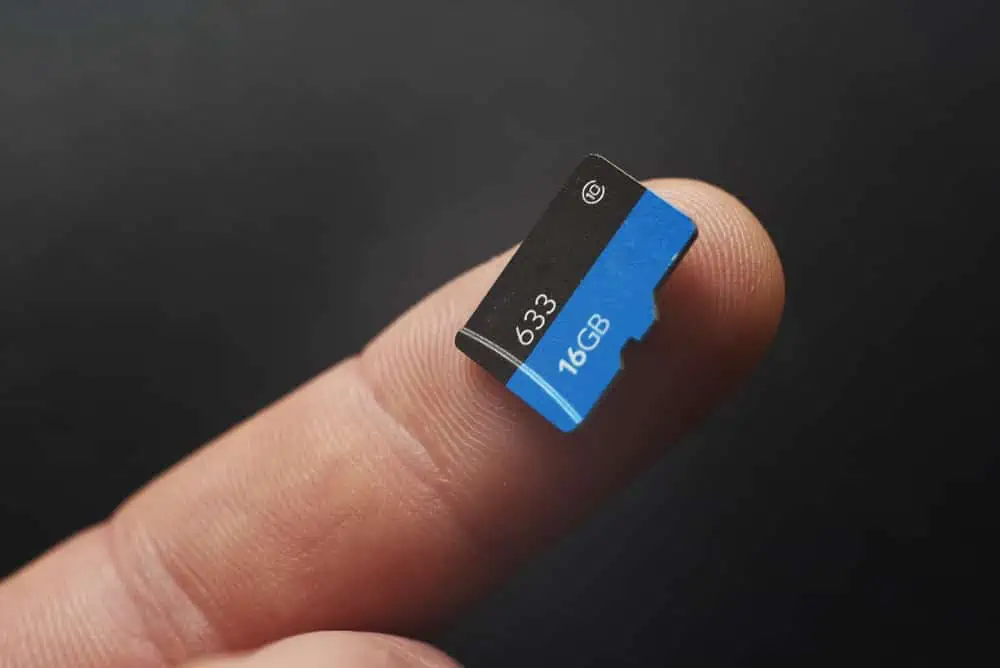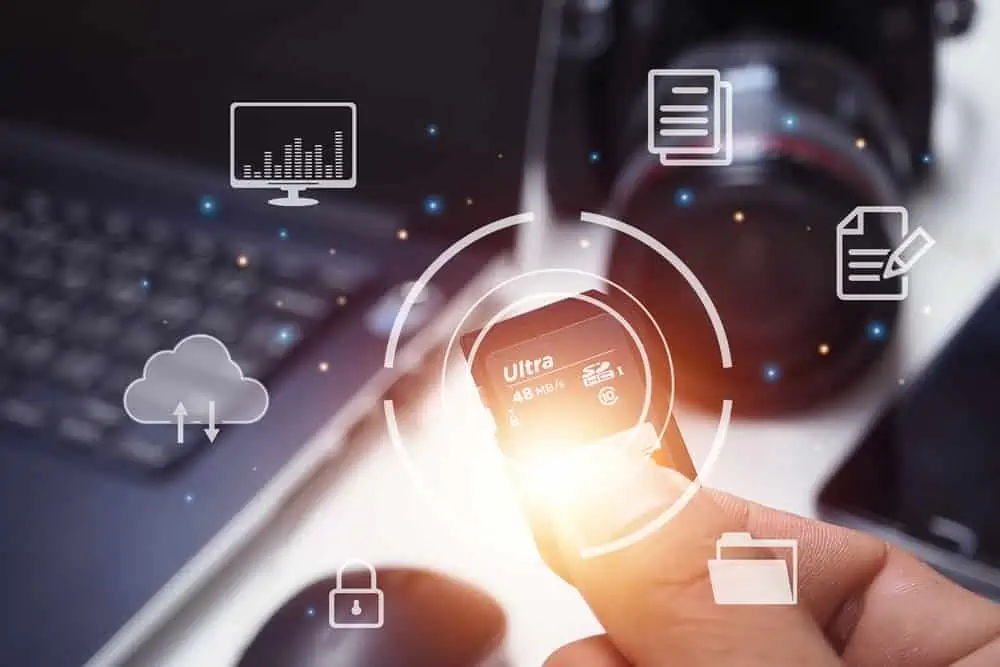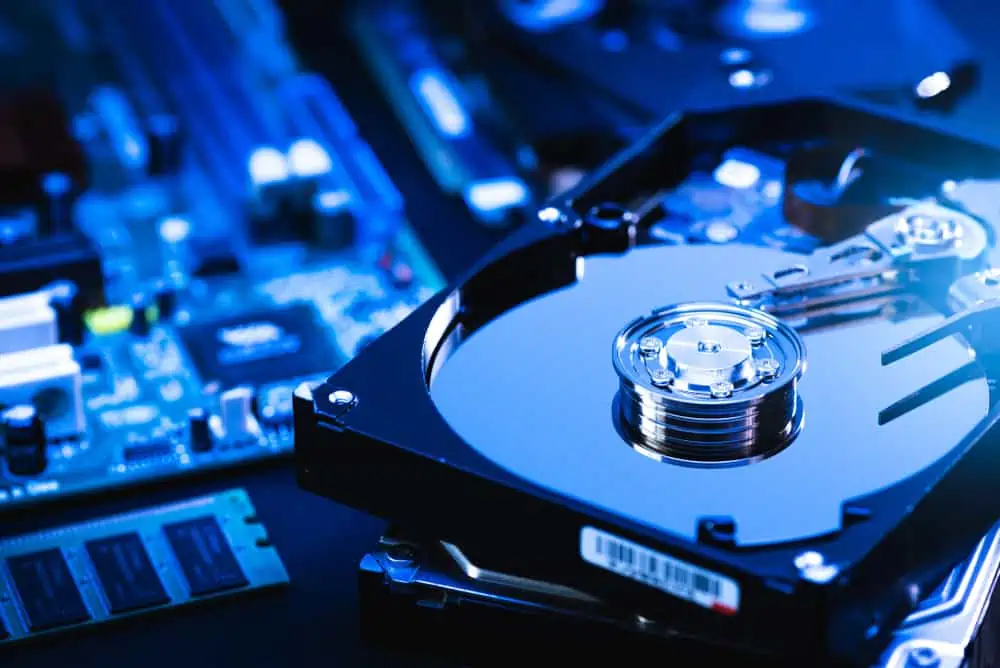Curious to know what an SD card reader is all about? This article explains every important info about this card reader.
Overview
When the SD card was introduced in the late 1990s by SanDisk Corporation, a way for the card to interact with devices was needed. That’s where the SD card reader came in.
To start with, an SD card reader is an input device that reads and writes data from and to an SD (Secure Digital) card. It basically acts as an interface between the SD card and a host device such as a computer or a mobile phone.
Thereby enabling the data on the SD card to be transferred to the host device or vice versa. Besides, SD card readers are usually small and connect to a computer through a USB port or Thunderbolt.
It can also connect to a mobile device via its charging port. Moreover, this memory card reader typically has a slot where you can insert the SD card.
That aside, the card reader is compatible with various devices, including computers, cameras, smartphones, and tablets. However, it is majorly used by photographers who need to transfer large image files from their camera’s SD card to their computer for editing.
Nonetheless, as technology advanced, most computers and smartphones began to feature memory card slots, which act as built-in SD card readers. These memory card slots serve the same purpose as an SD card reader.
Regardless, SD card readers are still used by a majority of people today, especially for older devices that lack memory card slots.
Features of an SD Card Reader
The previous section taught us what this device is all about. In this section, you will learn some of its major features.
Compatible with Several SD Card Types
There are different types of SD cards, including SDHC, SDXC, and microSD. Depending on the type of SD card reader you purchase, SD card readers are compatible with several SD card types.
Therefore, you can read and write data to and from these different SD card types using an SD card reader.
It is Hot-swappable or Hot-pluggable
Hot swapping or hot plugging is the ability to insert or remove a component in a computer while it is still running. Hence, you don’t need to shut down the computer or interrupt its operation when you insert or remove the component.
Thus, because this card reader is hot-swappable, you can insert or remove it into a device without needing to shut the device down.
It Can Simultaneously Read and Write Data
Another essential feature of this card reader is that it can transfer and receive data to and from a host device simultaneously. This is a very important feature as it allows users to send and receive data more effectively.
It Offers Different Designs and Form Factors
This card reader is available in various designs and form factors, ranging from portable and compact to larger and more specialized. Hence, an SD card reader’s design and form factor can impact its functionality.
However, the USB Stick form factor is the most popular form factor for an SD card reader. This form factor is usually small and compact and looks very similar to a USB flash drive.
Therefore, it can be easily carried around in your pocket or bag. Moreover, USB stick SD card readers usually have a USB connector on one end and an SD card slot on the other.
It Has Several Brands
There are numerous brands of SD card readers out there, which is due to the demand for the device. Basically, as SD cards have become more popular, the need for SD card readers to transfer data to and from SD cards also grows.
Thus, many manufacturers have entered the market, offering their SD card readers with distinct features, capabilities, and price points. Besides, the availability of multiple brands of SD card readers gives people more options to choose from based on their specific needs and preferences.
However, it is very important to purchase from a reputable brand in order to avoid any complications. A few SD card readers from reliable brands include SanDisk Professional Multi-Card PRO-READER and Anker 2-in-1 USB 3.0 SD Card Reader.
Pros of an SD Card Reader
It is Easy to Use
SD card readers offer plug-and-play functionality and don’t require any technical expertise.
Hence, you can simply insert the card reader into a host device, and you’re good to go. Besides, they don’t require additional software or drivers to function properly.
Offer Portability
Although SD card readers come in various form factors, they are mostly portable and compact.
This allows users to carry them around with ease. Hence, it is ideal for users who need to transfer files from an SD card on the go.
Multi-functional Device
Other than simple data transfer, many SD card readers offer additional functionality.
These include card formatting, data recovery, password protection, and card cloning. Besides, some SD card readers come with multiple SD card slots.
This allows users to access multiple SD cards at the same time.
Durability
SD card readers are designed to be durable and long-lasting.
Therefore, they should be able to withstand harsh environments, making them ideal for outdoor activities or travel.
It Accommodates Various Storage Sizes
Ranging from a few megabytes to a couple of terabytes, SD card readers support several SD cards with various storage sizes.
Cons of an SD Card Reader
Slow Transfer Speed
Most SD card readers offer slower transfer speeds compared to other storage devices like SSD.
This can lead to longer transfer time, especially when trying to transfer large files. However, the transfer speed of an SD card reader mostly depends on the type of SD card.
Prone to Data Corruption
Although SD card readers are hot-swappable, your data can get corrupted if not ejected properly.
Data corruption can also happen if the card reader is removed during a transfer. This can lead to the loss of important data stored on the SD card.
Security Risks
Due to their small form factor, SD card readers can easily be stolen or lost.
If such happens, you’re definitely going to lose all the data stored in the SD card inserted in the SD card reader.
Counterfeit Issue
Because several manufacturers make SD card readers, there are lots of fake SD card readers out there.
These fake SD card readers might not even work or may carry malware. Hence, in order to avoid any counterfeit issue, it is best you purchase the card reader from a reliable source.
Prone to physical damage. Even though this card reader is designed to be durable, it is still prone to physical damage.
Frequently Asked Questions
An SD card (Secure Digital card) is a small storage device for storing and transferring digital data. To find out more about an SD card, read our SD Card Explained: Secure and Portable article.
An SD card reader can typically be used with several types of memory cards. These include SD, SDHC, SDXC, and microSD cards.
However, it is essential to check the card reader’s specifications to ensure compatibility with a specific type of memory card.
Yes, you can use some SD card readers with your smartphone or tablet. Those types of SD card readers are usually connected to the smartphone or tablet via the charging port.
Yes, a memory card reader is the same as an SD card reader.
An SD card reader is an input device that transmits and receives data from and to an SD (Secure Digital) card. It basically acts as an interface between the SD card and a host device such as a computer or a mobile phone.
Conclusion
An SD card reader is a versatile device that enables users to read, write, and transfer data from SD memory cards to a PC. Moreover, this device offers several benefits, such as multi-functionality and portability.
Additionally, it is compatible with a wide range of devices, including a camera, smartphone, and tablet. Also, it can be used with numerous types of SD cards, such as SD, SDHC, SDXC, and microSD cards.
However, as with other technology, this memory card reader has its own fair share of drawbacks. Some of these include slow transfer speed, data corruption, physical damages, and security risks.
Besides, most computers and mobile devices nowadays feature memory card slots that serve as built-in SD card readers. Nevertheless, SD card readers are still widely used today, particularly for older devices that lack memory card slots.
We hope you found this article on SD card readers insightful and enjoyable to read. Don’t hesitate to leave your feedback by completing the “Leave a Reply” form found at the bottom of this page.
You could also use the “Was this page helpful?” buttons below to give us your feedback.
Lastly, if you’re interested in reading more articles on topics similar to this, please visit our Storage & Disk Technology Explained page.



